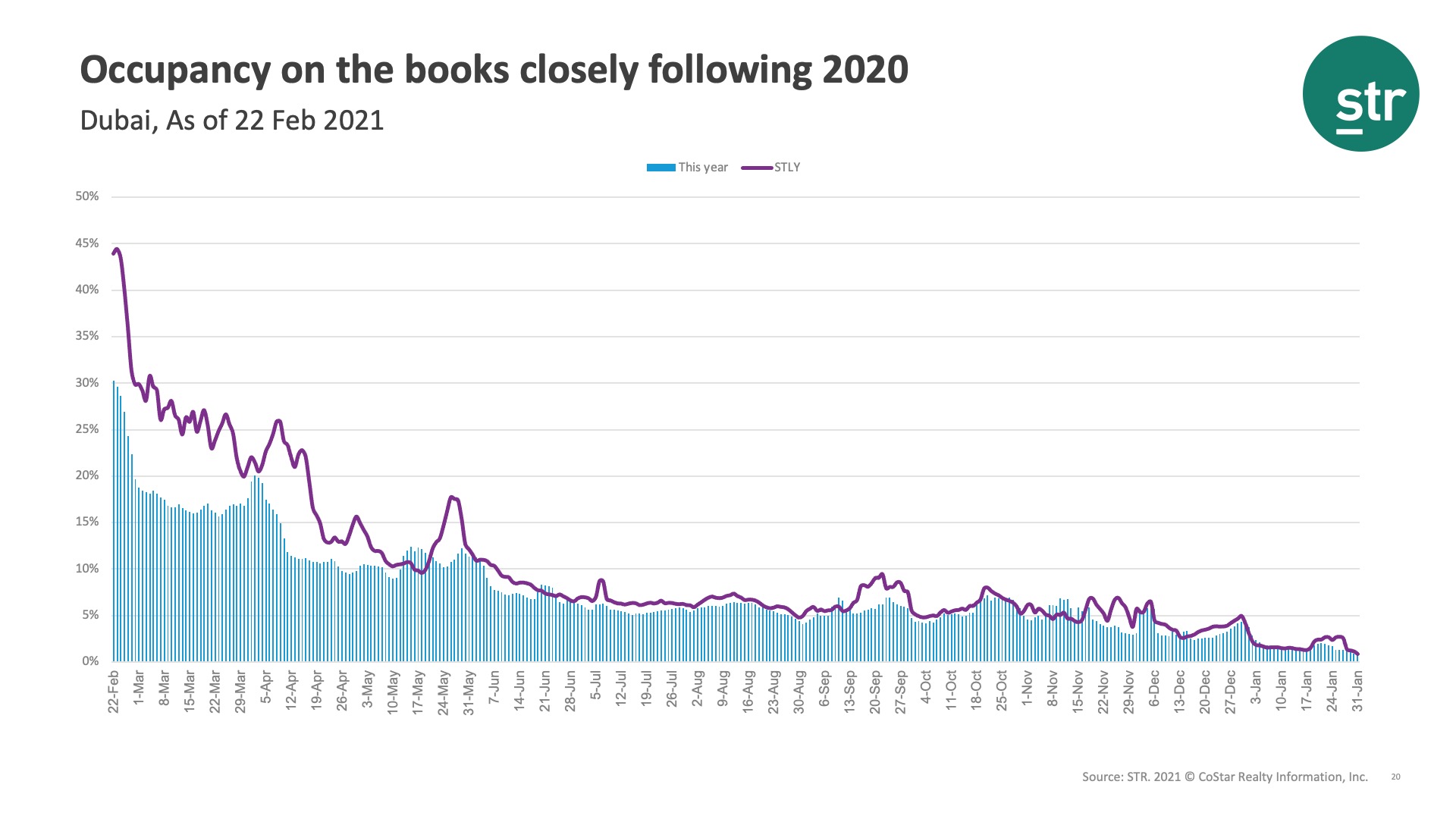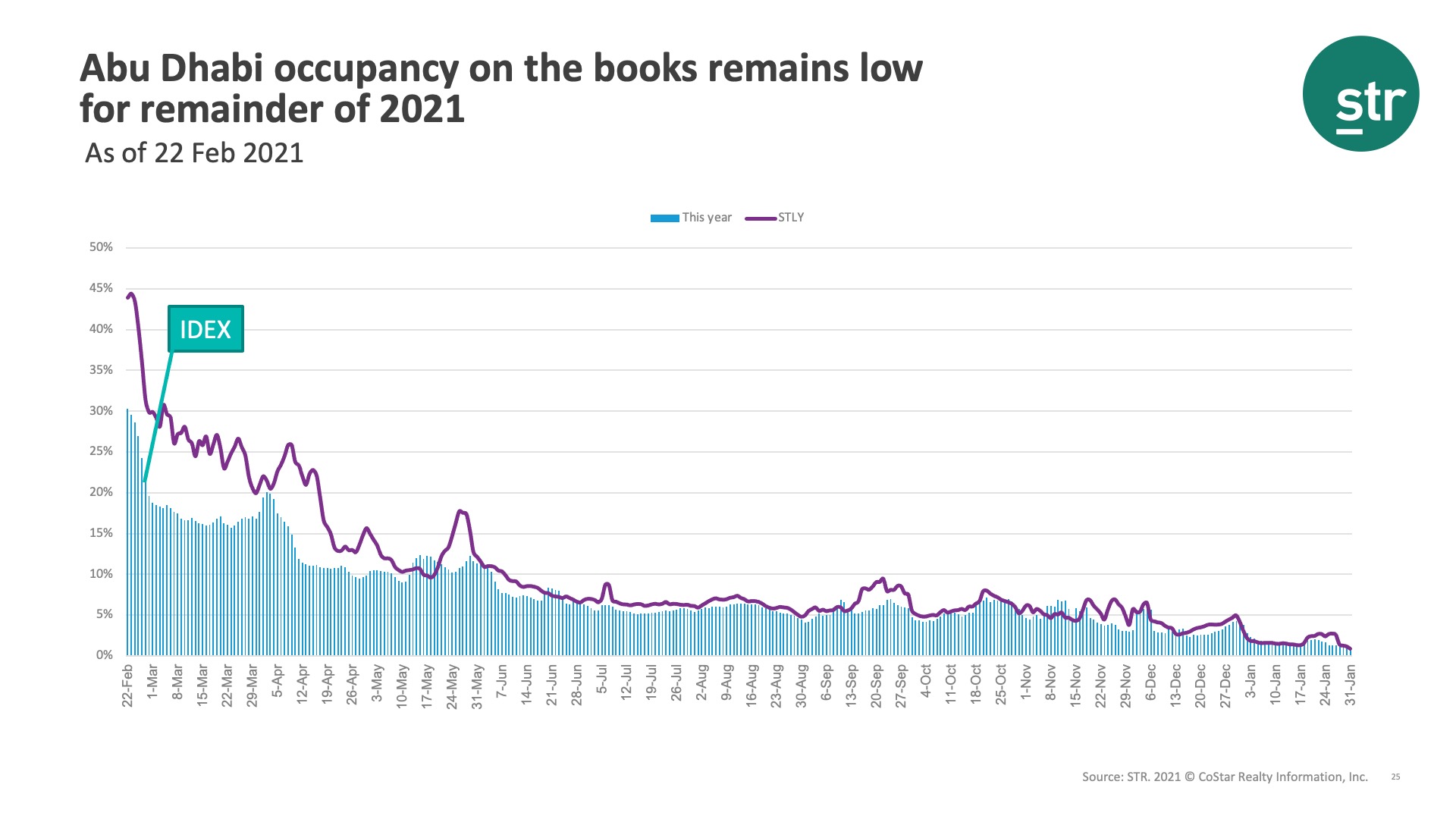
Hotels in the Middle East have shown resilience throughout the pandemic, with performance at higher levels compared to other parts of the world. Those higher levels have been highlighted by the region’s key markets. Dubai was virtually the only tourist destination open for international leisure travel, while Abu Dhabi hosted the International Defense Exhibition (IDEX) in person in late February 2021 with zero quarantine requirements for international arrivals.
However, with growing case counts and tighter restrictions affecting both markets, momentum has slowed a bit when looking to the future. Powered by Forward STAR, we are able to view the markets’ next 365 days of occupancy on the books.
Dubai
As of 22 February, Dubai’s occupancy on the books is trailing slightly behind 2020 levels in the metric. Between March and April 2021, occupancy on the books for the market remains between 10-20%, and beyond those months, the metric stays below 10% with only occasional lifts.
Dubai is still set to host Expo 2020 from 1 October 2021 through 31 March 2022. There is currently little to no impact for that period as of now—the highest level (7.2%) is for a Thursday (21 October 2021). It should be noted, however, that booking windows have shrunk significant during the pandemic because of uncertainty and a higher volume of availability. Assuming improved pandemic metrics and less limitations on travel later in 2021, demand for hotels should pick up significantly.

The market started 2021 off strong, with January performance much closer to pre-pandemic levels: occupancy (65.9%), ADR (AED588.51) and RevPAR (AED388.12).
Abu Dhabi
The in-person IDEX conference brought double-digit increases in ADR and RevPAR to the market, even as occupancy was still down year over year. Abu Dhabi hotels saw its highest daily ADR and RevPAR levels, along with its largest year-over-year increases, on the first day of the conference (21 February). On that day, ADR jumped 50.5% to AED606.80, while RevPAR rose 34.4% to AED446.57. Occupancy remained between 67-74%, with the highest daily occupancy level (73.7%) occurring on 22 February, which was also the day with the steepest year-over-year decline (-12.7%) in the metric.
Abu Dhabi’s decision to host an in-person conference showed that hotels could still benefit from these events, however, the impact was still smaller than what we would typically see pre-pandemic.
Looking ahead with Forward STAR, the country’s occupancy on the books follows a similar pattern to Dubai. While there are slight rises here and there, the metric remains below the 10% level for most of the year.

While confidence is growing in global vaccine campaigns and a more significant return in travel demand, hoteliers are remaining patient for more meaningful improvement in their performance.
To learn more about the data behind this article and what STR has to offer, visit https://str.com/.







Sign up to receive our stories in your inbox.
Data is changing the speed of business. Investors, Corporations, and Governments are buying new, differentiated data to gain visibility make better decisions. Don't fall behind. Let us help.



















Sign up to receive our stories in your inbox.
Data is changing the speed of business. Investors, Corporations, and Governments are buying new, differentiated data to gain visibility make better decisions. Don't fall behind. Let us help.











